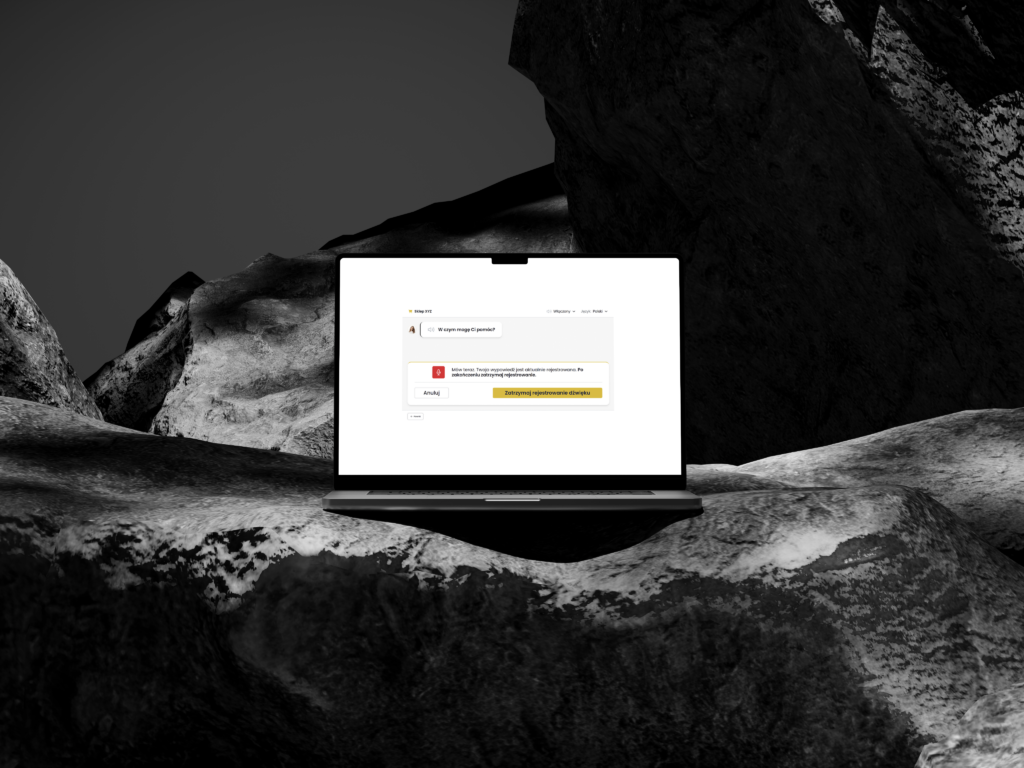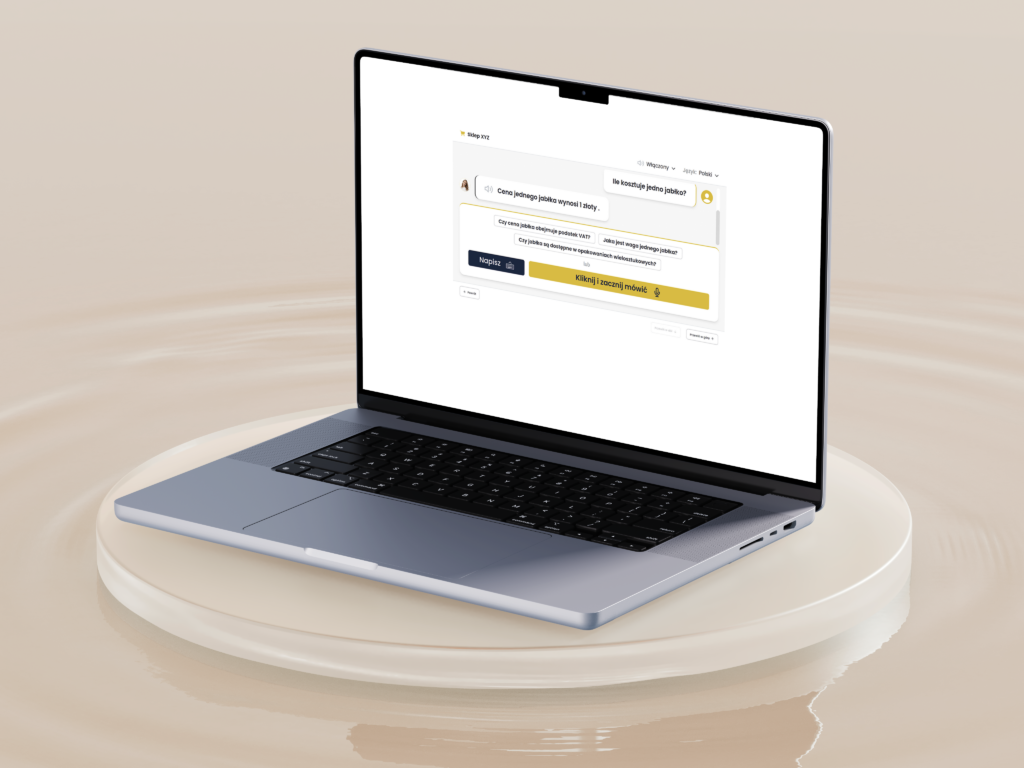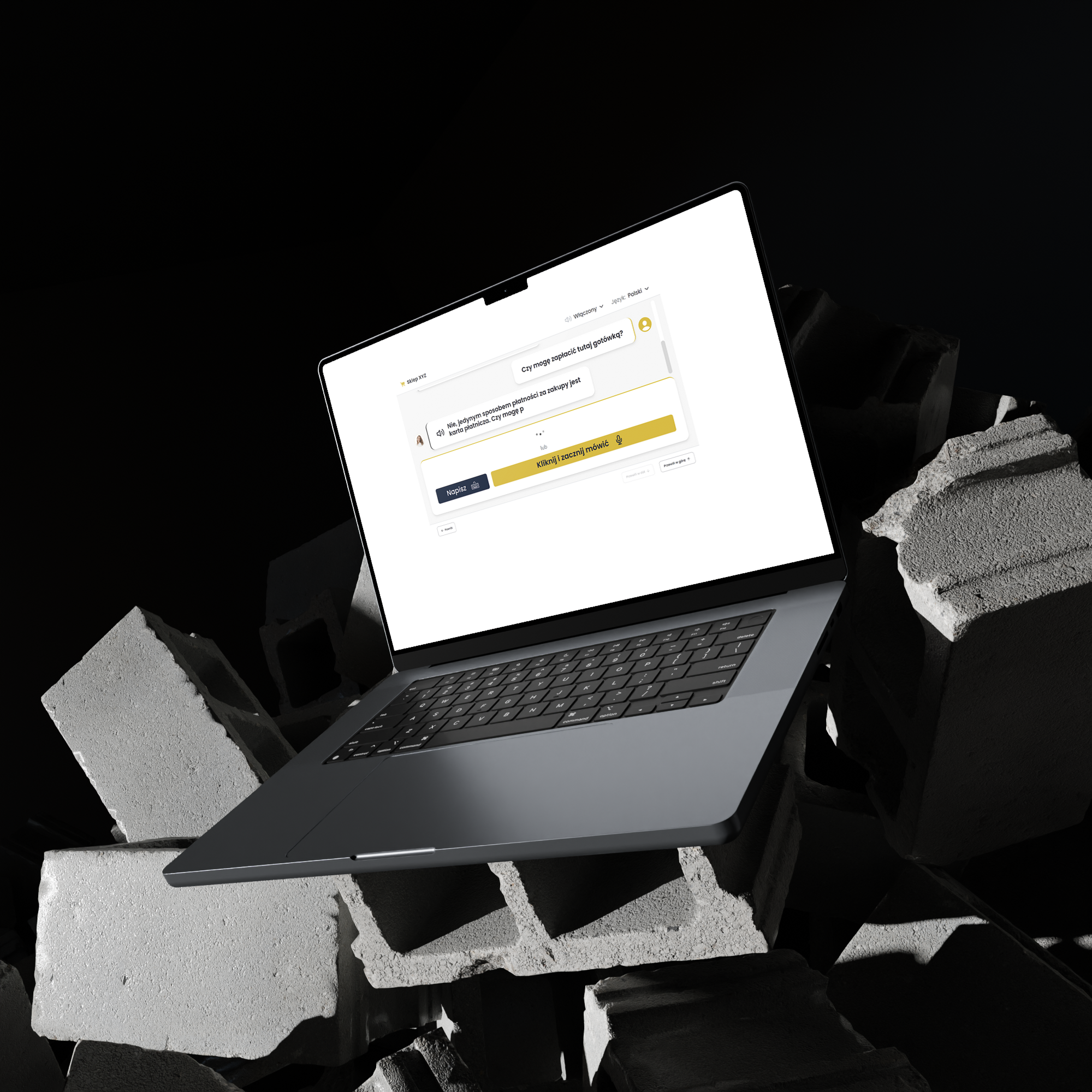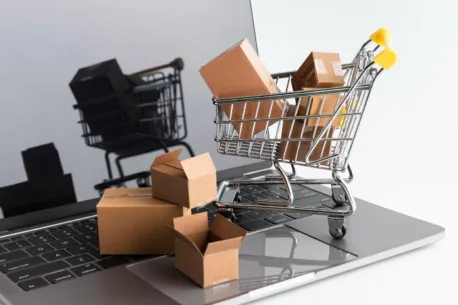
Self-Checkout Assistant AI with Tablet
About project
We designed the Self-Checkout Assistant AI to revolutionize retail service. Our solution integrates a tablet with an intuitive interface, automates processes, and personalizes customer service, enhancing shopping experiences and store operational efficiency.

Problem:
Traditional self-checkout systems encounter several limitations that negatively impact customer experience and store efficiency. Key challenges include:
- Lack of support for complex customer queries: Customers often feel frustrated and need to wait for staff assistance.
- Long queues: Issues with self-checkout processes lead to increased wait times.
- Low interface intuitiveness: Especially for elderly customers or those unfamiliar with technology.
- Lack of behavioral data analysis: Missing insights prevent personalized service.
- High operational costs: Frequent staff interventions increase overhead.
These challenges resulted in reduced customer satisfaction, diminished loyalty, and lowered operational efficiency for retail stores.
Actions:
- Analyzing self-checkout issues:
- Identified common barriers faced by customers during the self-checkout process.
- Defined essential functions for the AI assistant, such as real-time support, behavior analysis, and process automation.
- Developing an intelligent AI assistant:
- Designed an AI system capable of real-time user behavior analysis.
- Integrated voice recognition and text-based interaction features.
- Tablet integration:
- Implemented an intuitive interface on a tablet with quick access to FAQs and step-by-step guidance.
- Enabled seamless support access without requiring staff involvement.
- Automating common purchasing processes:
- Automated resolutions for frequent issues like scanning errors or payment changes.
- Added complementary product suggestions and promotional offers.
- Behavior analysis:
- The system monitors and analyzes customer behavior at checkout to optimize the interface and purchasing process.
- Generated reports to identify potential improvements.
- Personalizing customer service:
- Offered personalized recommendations and promotional suggestions based on customer purchase history and preferences.
- Delivered tailored support for individual needs.
- System testing and optimization:
- Conducted extensive real-world testing to evaluate the assistant’s efficiency.
- Regular updates based on user feedback and data analysis.

Solution to the Problem:
The Self-Checkout Assistant AI with Tablet successfully addressed key challenges of self-checkout systems. Its major features include:
- Real-time support: The AI system resolves typical user issues, reducing the need for staff intervention.
- Process automation: Speeds up essential operations such as product scanning and payment handling.
- Interactive tablet: An intuitive tablet interface provides easy access to support and step-by-step instructions.
- Behavior analysis: Data collected helps optimize purchasing processes and interface design.
- Personalized service: Customized recommendations and promotional offers increase basket value.

Client Achievements:
- 40% reduction in customer checkout time due to AI automation and immediate support.
- Improved customer experience: Clients resolve issues quickly without waiting for staff assistance.
- Lower operational costs: Less staff involvement required at self-checkouts.
- Enhanced purchase data analysis: Detailed reports optimize product offerings and store layouts.
- Increased customer loyalty: Enhanced service quality and reduced frustration improve satisfaction and retention.
Why Us?
- Combining AI and retail: Advanced AI technology integrated with practical retail applications.
- Scalable solutions: Ready for multi-location deployment and seamless integration with existing systems.
- User-friendly interface: Designed for simplicity, catering to users of all technical skill levels.
- Data-driven optimization: Continuous updates based on real-world data improve functionality over time.
Further Cooperation:
- Customer purchase data analysis: Implementing advanced modules to analyze checkout behavior.
- Recommendation module: Automatic product suggestions based on purchase history.
- Loyalty program integration: Collect loyalty points and offer personalized promotions.
New Opportunities:
- Predictive analysis: Preventing potential issues through automatic system responses.
- Implementation in other retail locations: Planned deployment across multiple stores nationwide.
- Face recognition technology (Face ID): Adding premium customer authentication options.
- Mobile app for customers: Tracking purchase history and accessing personalized offers.

Trusted by:





































